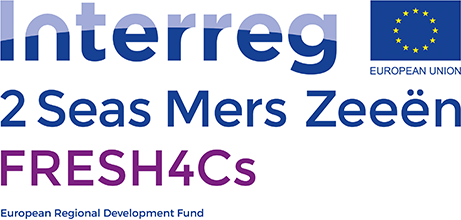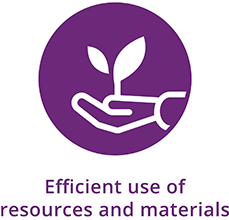The Interreg project FRESH4Cs ended formally on March 1st 2023, but its legacy continues to make an impact on sustainable water management. This page contains the project information and results as a legacy database for the following years, so that lessons learnt remain available for follow-up projects.
The FRESH4Cs project focused on the demonstration of several alternative sustainable freshwater resources for coastal regions. This demonstration focus was supported by technology evaluation and monitoring, as well as by non-technological barriers and opportunities for replication. The main outputs of the project are the five demonstration sites where an alternative water resource was tested, two feasibility studies for replication, and roadmaps based on the technological and non-technological evaluation.
Road map
A first road map presents the monitoring results of the different sites. For each of the demo sites we evaluated the suitability of the used technologies to provide sustainable fresh water. This roadmap will support future investors in making technical decisions.
Download the roadmap for technological evaluation
A second roadmap focuses on the non-technological aspects. In most of the FRESH4Cs demo sites these aspects were decisive to make or break the project. Especially collaboration between actors who do not usually work together proved essential.
Download the roadmap for non-technological evaluation
Demonstration sites
Each of the demonstration sites and feasibility studies are summarised in an information sheet containing the lessons learnt.
- Felixstowe (Suffolk, UK) constructed a water transfer pipeline to serve farmers irrigation water. Water is captured at a river mouth using eel-friendly pumps, and then pumped to basins at the farms.
Download the information sheet on this demo
- At a second demonstration site in Felixstowe (Suffolk, UK) we constructed Managed Aquifer Recharge and Recovery (MAR) infrastructure. Lessons learnt focus on the technical aspects (low recovery rate) that have implications for the costs and the business case. Lack of an established regulatory framework is another barrier.
Download the information sheet on this demo
- In Koksijde (Belgium) a willow marsh was constructed to treat concentrate of an existing membrane water treatment plant for drinking water production. This nature-based solution removes nutrients and other pollutants. Scheduled follow-up projects will allow this year-round available water resource to be reused instead of being drained to sea.
Download the information sheet on this demo
- The demonstration site in Kwetshage, Belgium, implements above-ground water storage in a below-average sea level polder area. In these low-lying lands flood management is important. Finding the balance between storing water and retaining flood buffer capacity is crucial. In the investment a combination of landscaping works and a windmill to pump water to the site was used to obtain the desired storage
Download the information sheet on this demo
- At Braakman Zuid in the Netherlands, a pilot scale Creek Ridge Infiltration (CRI, a special type of MAR in a localized shallow phreatic aquifer) installation was constructed. Lessons learnt show how open collaboration between farmers and industry is the key to success for this case. The permitting process proved cumbersome. The strict quality standards for infiltration water are also a barrier, and careful selection and low-cost treatment of source water is necessary. For the same site a feasibility study for the full-scale development of a CRI system was made, building on the technological and non-technological aspects learnt in the pilot.
Download the information sheet on this demo
- In Kruiningen, the Netherlands, a feasibility study was conducted for the use of industrial effluent from Lamb Weston Meijer as irrigation water for nearby farmers. Originally it was planned to store water underground (CRI, see above), but effluent water proved not suitable even after treatment due to high salinity levels. The investment plan now considers other ways to deliver the water, i.e. through ditches and a pipeline, and the necessary water treatment.
Download the information sheet on this demo


